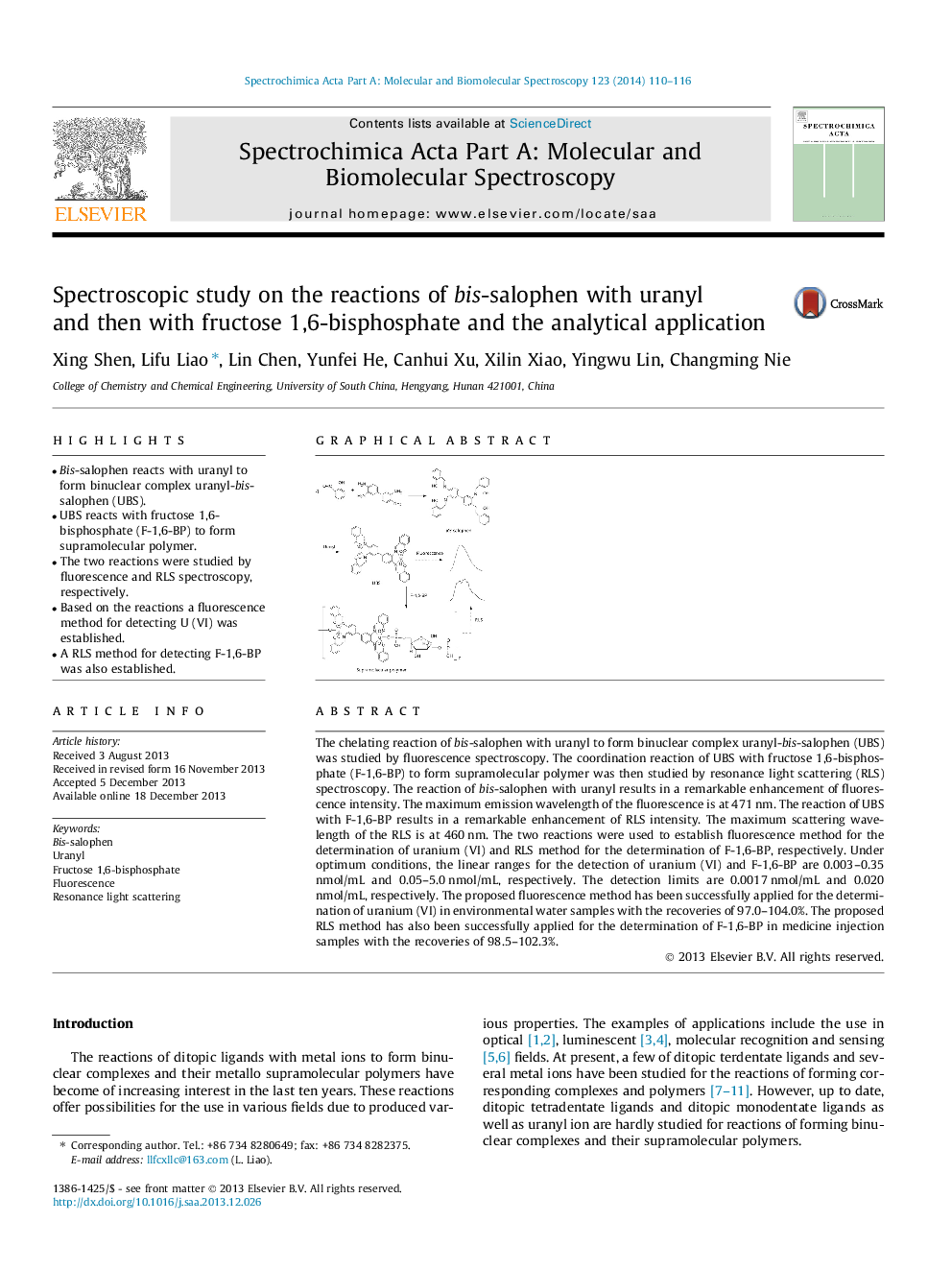| کد مقاله | کد نشریه | سال انتشار | مقاله انگلیسی | نسخه تمام متن |
|---|---|---|---|---|
| 1232826 | 1495245 | 2014 | 7 صفحه PDF | دانلود رایگان |
• Bis-salophen reacts with uranyl to form binuclear complex uranyl-bis-salophen (UBS).
• UBS reacts with fructose 1,6-bisphosphate (F-1,6-BP) to form supramolecular polymer.
• The two reactions were studied by fluorescence and RLS spectroscopy, respectively.
• Based on the reactions a fluorescence method for detecting U (VI) was established.
• A RLS method for detecting F-1,6-BP was also established.
The chelating reaction of bis-salophen with uranyl to form binuclear complex uranyl-bis-salophen (UBS) was studied by fluorescence spectroscopy. The coordination reaction of UBS with fructose 1,6-bisphosphate (F-1,6-BP) to form supramolecular polymer was then studied by resonance light scattering (RLS) spectroscopy. The reaction of bis-salophen with uranyl results in a remarkable enhancement of fluorescence intensity. The maximum emission wavelength of the fluorescence is at 471 nm. The reaction of UBS with F-1,6-BP results in a remarkable enhancement of RLS intensity. The maximum scattering wavelength of the RLS is at 460 nm. The two reactions were used to establish fluorescence method for the determination of uranium (VI) and RLS method for the determination of F-1,6-BP, respectively. Under optimum conditions, the linear ranges for the detection of uranium (VI) and F-1,6-BP are 0.003–0.35 nmol/mL and 0.05–5.0 nmol/mL, respectively. The detection limits are 0.0017 nmol/mL and 0.020 nmol/mL, respectively. The proposed fluorescence method has been successfully applied for the determination of uranium (VI) in environmental water samples with the recoveries of 97.0–104.0%. The proposed RLS method has also been successfully applied for the determination of F-1,6-BP in medicine injection samples with the recoveries of 98.5–102.3%.
Figure optionsDownload as PowerPoint slide
Journal: Spectrochimica Acta Part A: Molecular and Biomolecular Spectroscopy - Volume 123, 5 April 2014, Pages 110–116
